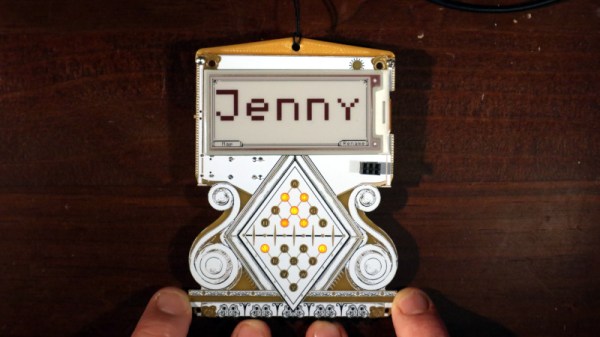We’ve been hinting at it for a few months now, running a series of articles on SAOs, then a Supercon Add-On Challenge. We even let on that the badge would have space for multiple SAOs this year, but would you believe six?
Way back in 2017ish, Hackaday’s own [Brian Benchoff] and the [AND!XOR] crew thought it would be funny and useful to create a “standard” for adding small custom PCB art-badges onto bigger conference badges. The idea was to keep it quick and dirty, uncomplicated and hacky, and the “Shitty” Add On was born. The badge community took to this like wildfire. While the community has moved on from the fecal humor, whether you call these little badgelets “SAOs”, “Simple Add-Ons”, or even “Supercon-8 Add Ons”, there’s something here for everyone. So if you’ve already got some SAOs in a drawer, bring them to this year’s Supercon and show them off!
Continue reading “The 2024 Hackaday Supercon SAO Badge Reveal”




















